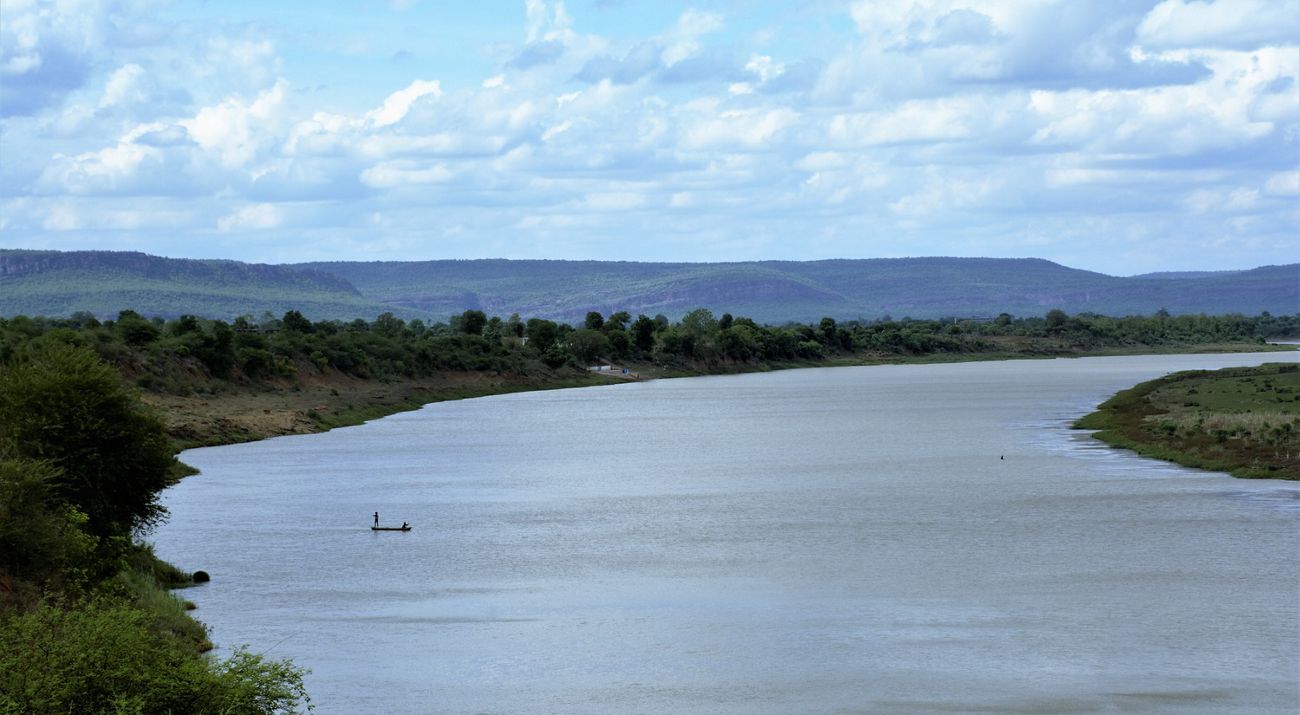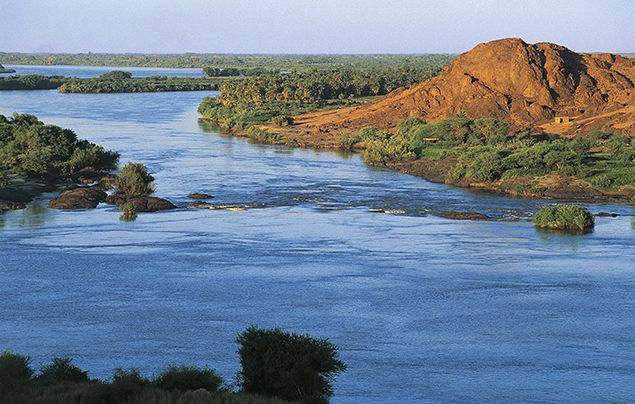Rivers are vital arteries for our world. They have shaped civilisations throughout history, providing essential water for drinking, irrigation, and transport. Many ancient cultures, like those along the Nile and Indus, were built entirely around these lifelines. Rivers often date back millions of years, far predating human existence. While it's hard to get an exact count, estimates suggest there are over 150,000 rivers globally, depending on how they are defined. Among these countless waterways, the Nile River is often cited as the world's longest, while the Amazon River is the largest by water volume. The Congo River is the world's deepest. But do you know which river is considered the oldest in the world? It is estimated to be around 350 to 400 million years old and flows through central Australia. In this article, we'll take a look at the world's oldest rivers.
ALSO READ| List of Top 7 Oldest Maps in the World
List of Oldest Rivers in the World
The Finke River, or Larapinta, in Central Australia, is widely considered the world's oldest river. Scientists estimate its age at 350-400 million years. This extreme antiquity is proven by its deeply cut, winding bends, known as incised meanders, that flow through the MacDonnell and James Ranges. Since meanders typically only form on flat land, the river must have existed before these mountains were uplifted during the Alice Springs Orogeny, which occurred hundreds of millions of years ago.
| Rank | Name | Country/Continent | Estimated Age (Million Years) | Description & Lesser-known Facts |
| 1 | Finke | Australia | 400–350 | Predates the Alice Springs Orogeny; parts only flow after heavy rain. |
| 2 | Meuse | Europe (France, Belgium, Netherlands) | 340–320 | The Ardennes forests were shaped during the Hercynian orogeny. |
| 3 | French Broad | USA (North Carolina, Tennessee) | 340–320 | Flows north instead of south; feeds over 4,000 miles of streams. |
| 4 | New | USA | 325–260 | Dissects the Appalachian Mountains; it may have been a river before the Atlantic Ocean existed. |
| 5 | Rhine | Europe (Germany, the Netherlands, Switzerland) | 240 | Formed in the Triassic, these may dissect ranges older than the Alps. |
| 6 | Save | Southern Africa | 205 | Formed during Gondwana's breakup, outflows to the Indian Ocean. |
| 7 | Narmada | India | 160 | Flows west, unlike most Indian rivers, which flow in a rift valley. |
| 8 | Amur | Asia (Russia/China) | 125 | Flows through eastern Siberia; crosses mountain formations older than itself. |
| 9 | Macleay | Australia | 80 | Predates the uplift of the Great Escarpment; it runs through gorges and rainforest. |
| 10 | Colorado | USA | 75 | Famous for creating the Grand Canyon, uplifted by the Laramide orogeny. |
| 11 | Murrumbidgee | Australia | 75 | Older than the Great Dividing Range, a major tributary of the Murray River. |
| 12 | Nile | Africa | 75–65 | Only the Sudd section is ancient; the rest of the river is much younger. |
| 13 | Thames | UK | 58 | Formed during the Thanetian stage, its bed was once located elsewhere. |
| 14 | Indus (Sindhu) | Pakistan, India | 45 | Source in the Himalayas; vital for the ancient Indus Valley civilisation. |
| 15 | Tyne | UK | 30 | Carved valley by eroding chalk rocks; predates the last Ice Age. |
1. Finke River (Australia)

The Finke River is thought to be the world's oldest river, with an estimated age of 350 to 400 million years. This river is called Larapinta by Indigenous Australians. It flows only during periods of heavy rain and ends at Lake Eyre, which often dries up. The Finke is so old that it predates the Alice Springs Orogeny, a period of mountain formation.
FOR YOU| List of 7 Oldest Newspapers in India
2. Meuse River (Europe)

The Meuse River flows through France, Belgium, and the Netherlands and is about 320-340 million years old. It helped shape the landscape during the Hercynian orogeny, an early period of mountain building in Europe. The river is known for carving through the Ardennes forests, flowing north to the North Sea.
3. French Broad River (USA)

The French Broad River is among the oldest in North America, with an estimated age of 320-340 million years. It begins in North Carolina and flows through Tennessee, cutting through the Appalachian Mountains. Unlike most rivers, it flows northward. Another unique feature is its network of more than 4,000 miles of streams and creeks flowing into it. It shares its geological history with the neighbouring New and Susquehanna rivers.
4. New River (USA)

The New River, running through the Appalachian Mountains, is believed to be at least 260 to 325 million years old. Some scientists suggest it might even be older. This river flows from North Carolina to West Virginia and eventually joins the Kanawha River. One interesting fact is that the New River is older than the mountains it flows through. Another surprising detail is that it cut its path before the Atlantic Ocean formed.
IN CASE YOU MISSED| Which is the Oldest Hotel in the World?
5. Rhine River (Europe)

The Rhine River, which flows through Germany, Switzerland, and the Netherlands, is about 240 million years old. It started forming during the Triassic period, but may be even older if it helped cut through previous mountain ranges. Today, the Rhine is a busy waterway, famous for its scenic beauty and castles along its banks. Uniquely, its course was likely decided by geological activity long before the Alps appeared.
6. Save River (Southern Africa)
The Save River in southern Africa was formed around 205 million years ago. It began to flow during the breakup of the ancient continent Gondwana. The river runs through Zimbabwe and Mozambique, ending in the Indian Ocean. The Save Valley is home to unusual vegetation and rare animal species.
7. Narmada River (India)

The Narmada River in India is about 160 million years old. Unlike most great Indian rivers, it flows westwards, crossing the middle of the country. It was formed during the breakup of Gondwana, the ancient supercontinent. The Narmada flows through a deep rift valley and has many beautiful gorges along its course. It is also home to unique fossils of prehistoric plants and animals.
Which Was The First River In The World?
The river most frequently cited as the world's oldest is the Finke River (or Larapinta) in Central Australia. Its age is estimated at 350-400 million years. Its course is so ancient that its deeply winding path, known as incised meanders, cuts through mountain ranges—the MacDonnell and James Ranges—that were uplifted long after the river established its flow. This geological evidence indicates its origin in the Palaeozoic Era.
MUST READ| List of 7 Oldest Cave Paintings in India
Which Is The Second Oldest River?
The Meuse River in Europe (France, Belgium, and the Netherlands) and the French Broad River in the USA are strong contenders, both estimated to be 340–320 million years old. The Meuse's course was shaped during the Hercynian orogeny. The New River in the USA is also widely promoted as the second-oldest, with an estimated age of 325–260 million years, predating the Appalachian Mountains.
What Is India's Oldest River?

The Narmada River is widely regarded as India's oldest river in terms of geological age, estimated at around 160 million years. Its key ancient characteristic is that it flows westward through a rift valley, a course formed during the rifting and breakup of the supercontinent Gondwana.
Is The New River Older Than The Nile?

Yes, the New River is generally considered geologically older than the Nile River. The New River's estimated age is between 325 and 260 million years, as it cuts through the Appalachian Mountains. While the Nile is the world's longest, only a section of the Sudd is ancient (around 65–75 million years old). The rest of the modern Nile's course is much younger, dating back only 1 or 2 million years.
What Are The 4 Ancient Rivers?

The term "Four Ancient Rivers" often refers to the Tigris, Euphrates, Nile, and Indus Rivers. These waterways are scientifically significant not for being the oldest geologically, but for being the cradles of the world's first great river valley civilisations around 3000 BCE. They provided the essential water and fertile sediment that allowed societies like Mesopotamia (Tigris and Euphrates), ancient Egypt (Nile), and the Harappan Civilisation (Indus) to develop agriculture, urban centres, and complex social structures, fundamentally shaping human history.
WHAT'S NEXT| List of Top 7 Oldest Mountain Ranges in India
Comments
All Comments (0)
Join the conversation